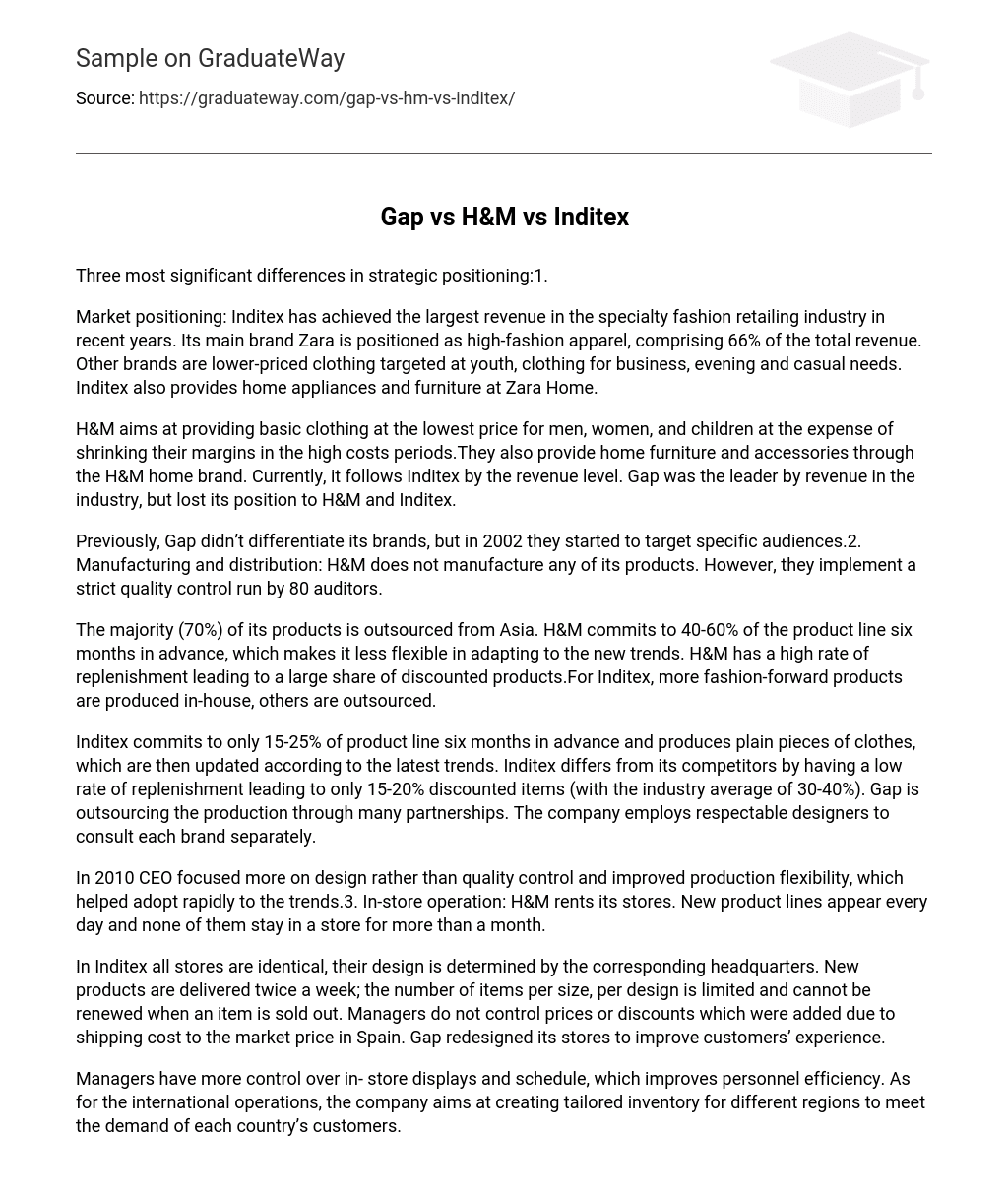Three most significant differences in strategic positioning:
Market positioning: Inditex has achieved the largest revenue in the specialty fashion retailing industry in recent years. Its main brand Zara is positioned as high-fashion apparel, comprising 66% of the total revenue. Other brands are lower-priced clothing targeted at youth, clothing for business, evening and casual needs. Inditex also provides home appliances and furniture at Zara Home.
H&M aims at providing basic clothing at the lowest price for men, women, and children at the expense of shrinking their margins in the high costs periods.They also provide home furniture and accessories through the H&M home brand. Currently, it follows Inditex by the revenue level. Gap was the leader by revenue in the industry, but lost its position to H&M and Inditex. Previously, Gap didn’t differentiate its brands, but in 2002 they started to target specific audiences.
Manufacturing and distribution: H&M does not manufacture any of its products. However, they implement a strict quality control run by 80 auditors. The majority (70%) of its products is outsourced from Asia. H&M commits to 40-60% of the product line six months in advance, which makes it less flexible in adapting to the new trends. H&M has a high rate of replenishment leading to a large share of discounted products.For Inditex, more fashion-forward products are produced in-house, others are outsourced.
Inditex commits to only 15-25% of product line six months in advance and produces plain pieces of clothes, which are then updated according to the latest trends. Inditex differs from its competitors by having a low rate of replenishment leading to only 15-20% discounted items (with the industry average of 30-40%). Gap is outsourcing the production through many partnerships. The company employs respectable designers to consult each brand separately. In 2010 CEO focused more on design rather than quality control and improved production flexibility, which helped adopt rapidly to the trends.
In-store operation: H&M rents its stores. New product lines appear every day and none of them stay in a store for more than a month. In Inditex all stores are identical, their design is determined by the corresponding headquarters. New products are delivered twice a week; the number of items per size, per design is limited and cannot be renewed when an item is sold out. Managers do not control prices or discounts which were added due to shipping cost to the market price in Spain. Gap redesigned its stores to improve customers’ experience.
Managers have more control over in- store displays and schedule, which improves personnel efficiency. As for the international operations, the company aims at creating tailored inventory for different regions to meet the demand of each country’s customers.





